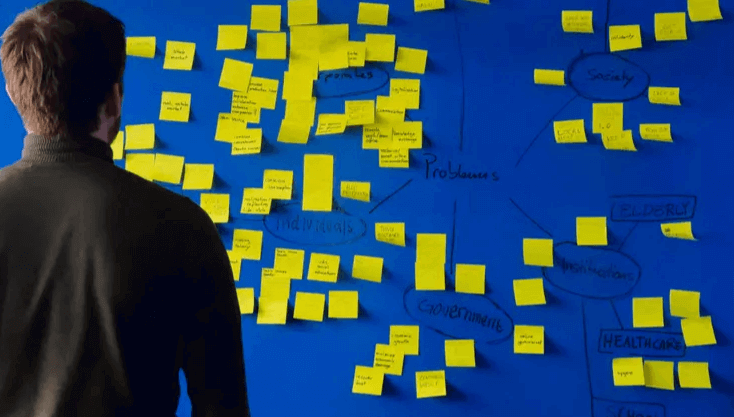In the realm of interaction design, in-depth research into user behavior and thought processes provides designers with critical insights to address problems effectively. This article aims to introduce practical methods to help novice designers understand users on a deeper level, broaden their perspectives, and create more valuable designs.
The Essence of Design: Beyond Subjectivity and Aesthetics
For many newcomers to the field, design is often misconceived as a purely subjective and emotional practice. They might believe that their personal aesthetic judgments define the entirety of design's purpose, expecting users to simply immerse themselves in the beauty they create. However, the essence of design goes far beyond superficial appearances.
Design is fundamentally about creating value through careful planning and precise execution. Its true significance lies in solving problems and delivering utility.
I. Deep Reflection Behind Misjudgments
Let’s begin with a seemingly simple question:
A pair of sneakers and a basketball together cost 1,100 yuan. The sneakers are 1,000 yuan more expensive than the basketball. How much does the basketball cost?
Many people instinctively answer 100 yuan, but upon deeper reflection, they’ll realize the correct answer is 50 yuan.
This common misjudgment stems from the dual thinking modes most people possess: fast thinking and slow thinking. These are also referred to as intuitive vs. deliberate thinking or emotional vs. rational thinking. While everyone has access to both modes, slow thinking typically activates only after fast thinking has provided an initial estimate or decision.
In everyday life, fast thinking is our brain’s default mode, offering quick responses based on past experiences. Its primary purpose is to conserve mental energy. However, it can lead to errors, especially when faced with nuanced problems. Slow thinking, which involves deliberate and logical reasoning, comes into play only when errors in fast thinking are recognized or when a situation demands careful analysis.
II. Analyzing Users’ Emotional and Rational Thinking
As discussed, most people simultaneously possess fast and slow thinking modes. For most users, emotional and intuitive responses dominate their initial engagement with a product or experience. They only shift to rationality when faced with challenges or when their interests are directly impacted.
In commercial settings, businesses often capitalize on users’ propensity for fast thinking. Emotional triggers and impulsive responses drive quick decision-making, making it advantageous for sellers to capture users’ attention and prompt immediate action before rational deliberation sets in.
III. Strategies to Sustain Users’ Emotional Engagement
Interaction design often employs the following strategies to maintain users’ emotional engagement:
1. Clearly Highlight Status and Progress
Instead of merely displaying progress or status, effective design should make it immediately intuitive. For example:
Use dynamic progress bars accompanied by clear numerical indicators and concise descriptions.
Differentiate progress stages with distinct colors or icons to enhance visual clarity and manage user expectations.
In gaming, experience bars serve as an excellent example. By showing how close players are to leveling up, these bars motivate continued engagement.
2. Guide Users Toward Their Goals
Guidance should be personalized and based on an understanding of users’ psychology and behavior patterns. Examples include:
Recommending tailored resources or courses on online learning platforms based on users’ progress.
Employing virtual assistants in shopping apps to suggest personalized products based on browsing and purchase history, enhancing users’ sense of support.
3. Provide Clear and Comprehensive Information
Beyond basic product features and pricing, include details like usage instructions, FAQs, and user reviews. Use multiple formats—visuals, audio, and text—to cater to different user preferences. Gradual disclosure techniques can further ensure users access deeper information as needed.
4. Prevent Users from Diagnosing Problems
Systems should offer robust self-diagnosis capabilities to detect and resolve issues automatically. For instance, software can provide error messages with step-by-step solutions, eliminating the need for users to troubleshoot independently.
Feedback mechanisms are equally vital. Apps can incorporate easy-to-access feedback portals for users to report issues, ensuring quick resolution and fostering trust.
5. Minimize the Complexity of Settings
Conduct thorough user needs analysis to remove unnecessary settings and simplify workflows. Visual interfaces with real-time previews can make complex adjustments intuitive. For example, image-editing tools often allow users to see immediate results as they tweak settings.
6. Focus on Perception Over Calculation
Design should leverage intuitive visuals and emotional cues to help users make decisions effortlessly. For example:
Hotel booking sites often showcase high-quality images, reviews, and star ratings to convey quality at a glance.
AI-powered recommendation engines in music apps suggest tracks tailored to user preferences, removing the need for manual searching.
7. Make Descriptions Relatable
Use language familiar to your audience, reflecting their cultural and linguistic nuances. For instance, products targeting younger users might incorporate popular slang to build rapport. Regular user testing and feedback collection ensure descriptions remain clear and engaging.
8. Pre-Calculate When Needed
Automate calculations to reduce user effort. Financial apps, for instance, can compute returns and risks, while e-commerce platforms can automatically calculate totals, discounts, and shipping fees.
9. Evoke Subtle Emotional Responses
Emotional design creates meaningful connections with users. For example:
Social apps can include thoughtful greetings or personalized messages to make users feel valued.
Story-driven design can foster emotional resonance. Travel apps, for instance, might showcase captivating travel stories and picturesque imagery to inspire users.
IV. Exploring the Purpose and Value of Design
Many novice designers initially view their work through the lens of personal aesthetics. However, as they gain experience, they realize that value creation and problem-solving are the core purposes of design. A design that lacks value or fails to solve real-world problems becomes hollow and unappealing.
While design and art share some overlap, they serve distinct purposes. Design prioritizes functionality and practicality, aiming to meet user needs and address specific challenges. Art, on the other hand, emphasizes self-expression and emotional resonance. Successful design balances these aspects, ensuring functionality while delivering an aesthetically pleasing experience.
Conclusion
Interaction design is about deeply understanding user mindsets and employing effective strategies to sustain emotional engagement. Designers must always remember that the essence of design lies in creating value and solving problems. By adhering to these principles, designers can craft meaningful and impactful solutions that contribute to human progress and development.







